The ever-changing disguises of dicliptera, Dicliptera sexangularis, make it a great candidate for the dodge and evade of spy work.
The Thursday Ramsey volunteer team has displaced cart-loads of dicliptera since March. At first, there were a lot of questions, mostly, “Is this dicliptera?” “Yes,” we’d say.
Cloaked in different attire throughout the year, it’s hard to keep up with its appearances.
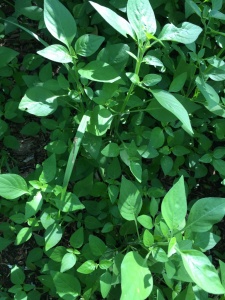
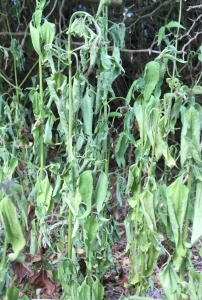
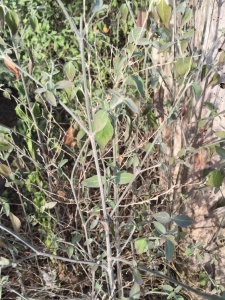
The leaves were a problem. The plant has several different sizes of leaves all growing on the same stalk.

The dead heat of summer was a problem. Dicliptera died, lost its leaves and remained as tall, tan sticks. The sticks became fodder on barren areas to rot away and become nutrients for the soil.
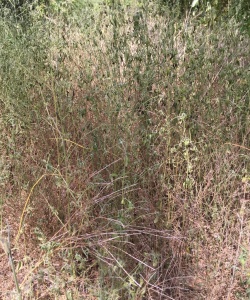
The wee new plants were a problem. They don’t look much like the adult plant, being bright green, verdant and innocent looking. If left, they would certainly reach adulthood. Out they went.
The height was a problem. Dicliptera has stages. Everything does, of course, but not like dicliptera. The plant is listed on page 49 of the Richardson/King book, “Plants of Deep South Texas.” It can reach up to 39 inches. We know differently. A pocket of thorn forest behind Crucillo Corner boasted/hid a group of plants as tall as 62 inches. We documented it on my phone camera.
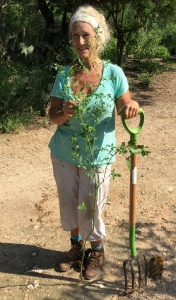
By October there were fewer questions; volunteers began to recognize the chameleon diversity of the native but aggressive plant – but there were no fewer sightings. It’s everywhere in the park.
After the October rains, Crucillo Corner to the bottom of Ani Cut was rife with chest-high dicliptera borders.
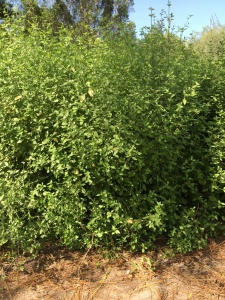
The uprooted plants also made good green mulch – a place-saver in bare patches to hopefully deter Guinea grass growth.
As much as we have ragged on this poor plant, it is not without good graces. It provides nectar for hummingbirds and Sulphur butterflies – in March.
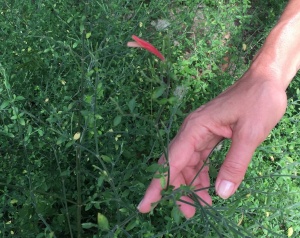
It also is a host plant for the Pale-banded Crescent, Texan Crescent and Crimson Patch butterflies. So are other plants in the Acanthaceae family in Ramsey Park.
The plant thrives with disturbances, like ripping them out by their roots. Our dicliptera-ousting campaign has not depleted the massive colonies. It will (always) come back. Job security for many a happy volunteer.
What’s your favorite plant to hate?

Leave a Reply